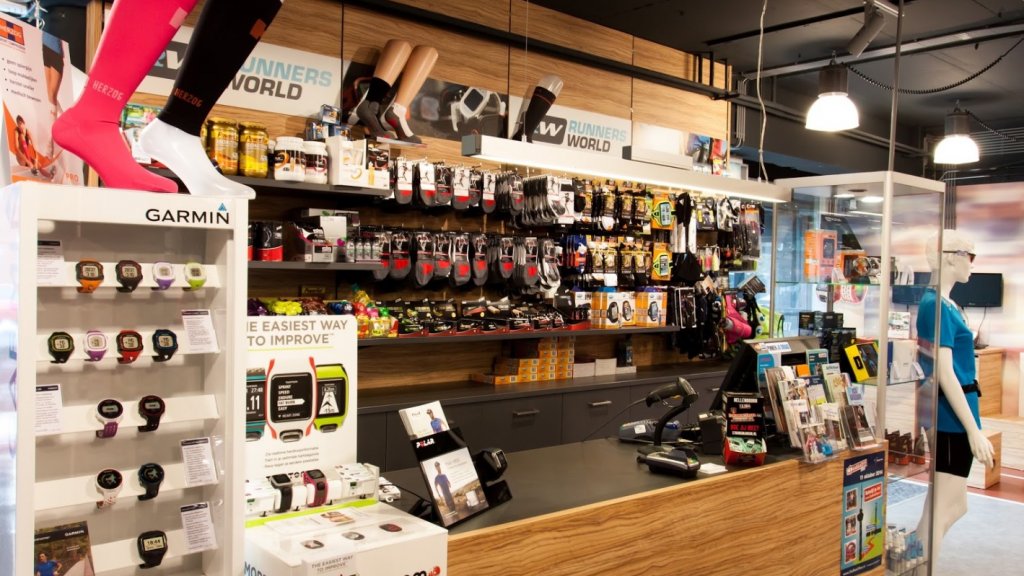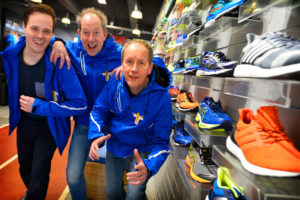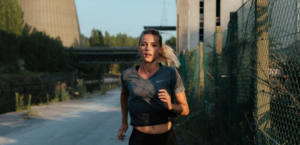With online shopping chipping away at specialty retail, stores strive for uniqueness and quality service to keep runners coming back.
“The back supports the front, and the front supports the back. That means if you’re finishing a local 5K and you’re running 14:50, you’re going to circle back and cheer on your teammates as they come in,” says Mill City Running co-owner Jeff Metzdorff.
More than 400 athletes in the running club have connected through the local shop, which is one example of a running specialty business that’s embracing an inclusive approach to the in-store experience.
And that’s necessary because in the past decade, many running retail locations have closed because of fierce competition from online retailers, an oversaturated market, and corporate consolidation, among other challenges. In 2016 alone (the last year the statistic was available in the National Runner Survey), 31 percent of more than 10,000 runners said they purchased their last pair of running shoes online, compared with just 7 percent who purchased their shoes at an athletic footwear store.
Because it’s easy to find deals online (and even on Runnersworld.com), specialty running stores have been forced to adapt. The most successful shops have accepted the challenge by finding creative ways to connect with their customers and keep them coming through their doors instead of browsing Amazon.
Creating, Embracing Runners
When a visitor walks into Mill City Running, owners Jeff and his wife, Bekah, often hear them say, “I’m not a runner.” The shop’s mission, though, is to make everybody feel like they can run their best.
“Everybody, whether you’re running once a week, once a month, or twice a day, is a runner,” Jeff Metzdorff says.
Since opening the shop in 2013, Mill City has offered “off-the-wall events” such as doughnut runs (group runs with stops at multiple bakeries) and the “Fast & the Curious” (a scavenger hunt group run), as well as instructional workshops and speaker series designed to welcome beginners.
Its bread and butter is truly building a community, which is something you don’t quite get with online shopping. “People are looking for experiences, whether it be a retail experience or a race experience,” Metzdorff says.
Taking a Stand
Heartbreak Hill Running Company, named after the famous incline on the Boston Marathon course, embraces the history of the world’s oldest annual marathon and the current events that unite runners and nonrunners alike. When Boston College track co-captains Dan Fitzgerald and Justin Burdon opened the first store in 2009, the goal was to create a brand that could stand on its own.
“I feel like a good brand can stand for things through running that aren’t necessarily about running. It could be through a runner’s lens, but can be relatable to a wider audience,” Fitzgerald says.
One of those statements was made last year with the “Immigrants Make America Fast” hats, which were designed to celebrate the accomplishments of immigrants through the story of Eritrean-born U.S. Olympian Meb Keflezighi’s 2014 Boston Marathon victory. Also last fall, the shop hosted a registration run for the midterm elections with a speaker panel and created a series of hats with the message “We the People Run This Democracy.”
“That could speak to you if you run, and it could also [speak] to you if you don’t because it has a lot of meaning,” Fitzgerald says.
Runners Meet Runners
The internet will always miss one thing: the chance to meet and grow a group of friends.
For those who run in the Orange County, California, area, A Snail’s Pace offers that connection with the “Academy” group. The shop, a fixture in Southern California since 1979, has stood the test of time by giving back to various training groups with the initiative of team nights for local programs.
And if you’re new or just trying to find some people to chat with on your run, the local store is an instant meeting spot. Fleet Feet in Austin, Texas, one of 177 locations around the country founded with a locally owned and operated model, hosts multiple free run groups, and partners with clubs in the community for free workouts.
“We’ve been fortunate to dig our heels in a community that’s healthy and that’s moving,” says local operating partner Ari Perez.
Going beyond the basic run, customers at Heartbreak Hill Running Company can enjoy group workouts that meet almost every day, instructional videos on the website, virtual and in-person coaching by Fitzgerald, and a treadmill studio with classes.
“We want to meet every runner where they are, provide them with expert guidance, and make it fun,” Fitzgerald says.
And isn’t that in-person connection a part of the beauty of running?
The Good and the Bad of Online Shopping
Go Online If… the Shop Doesn’t Have Your Size or Color: “I would hope that they’d try to get their stuff from us, but if we don’t have the color they want or the size they want, or we can’t get it in a timely manner, then that’s on us,” Fitzgerald says.
Go Online If… You Must Have a Discontinued Shoe: “If you’re absolutely in love with the previous year’s model, oftentimes you can find those in a warehouse somewhere and some dot com will have a whole bunch of them. A lot of times your run-specialty store will have moved on to the current model,” Metzdorff says.
Shop Local If… You’re Managing an Injury: “Not to say that we’re medical professionals, but in the case of injuries or preventive measures, that’s when we can guide you a little bit,” Perez says.
If You’re Buying Your First Pair: “If you’re starting at ground zero or starting over and looking for a new trainer, go to your local run shop, cut open a vein, and say, ‘I don’t know what I’m looking for, I need your help,’ ” Metzdorff says. “The great run shops will be more than happy to help you find your next trainer.”
A true love for sports








Recent Comments